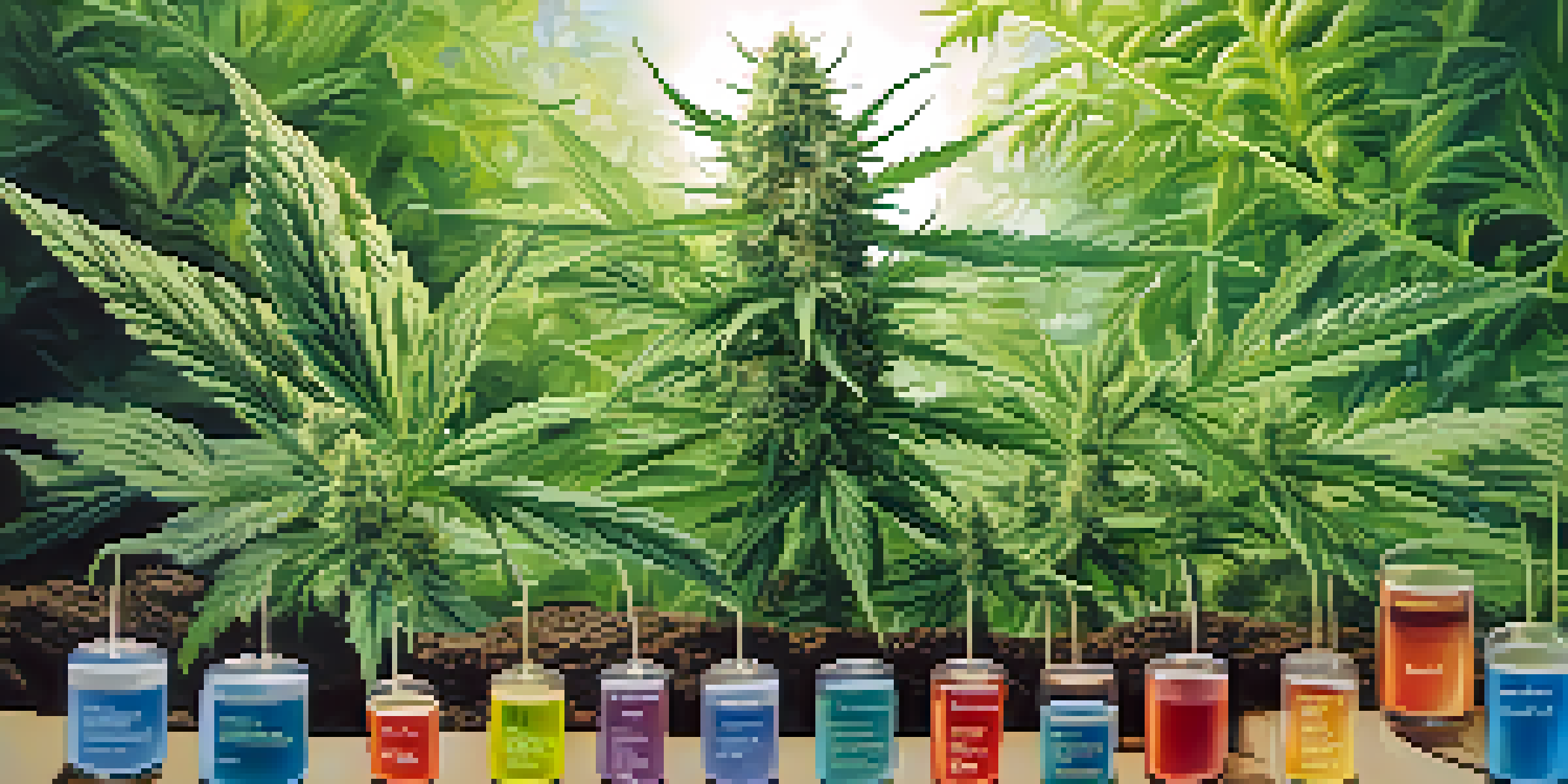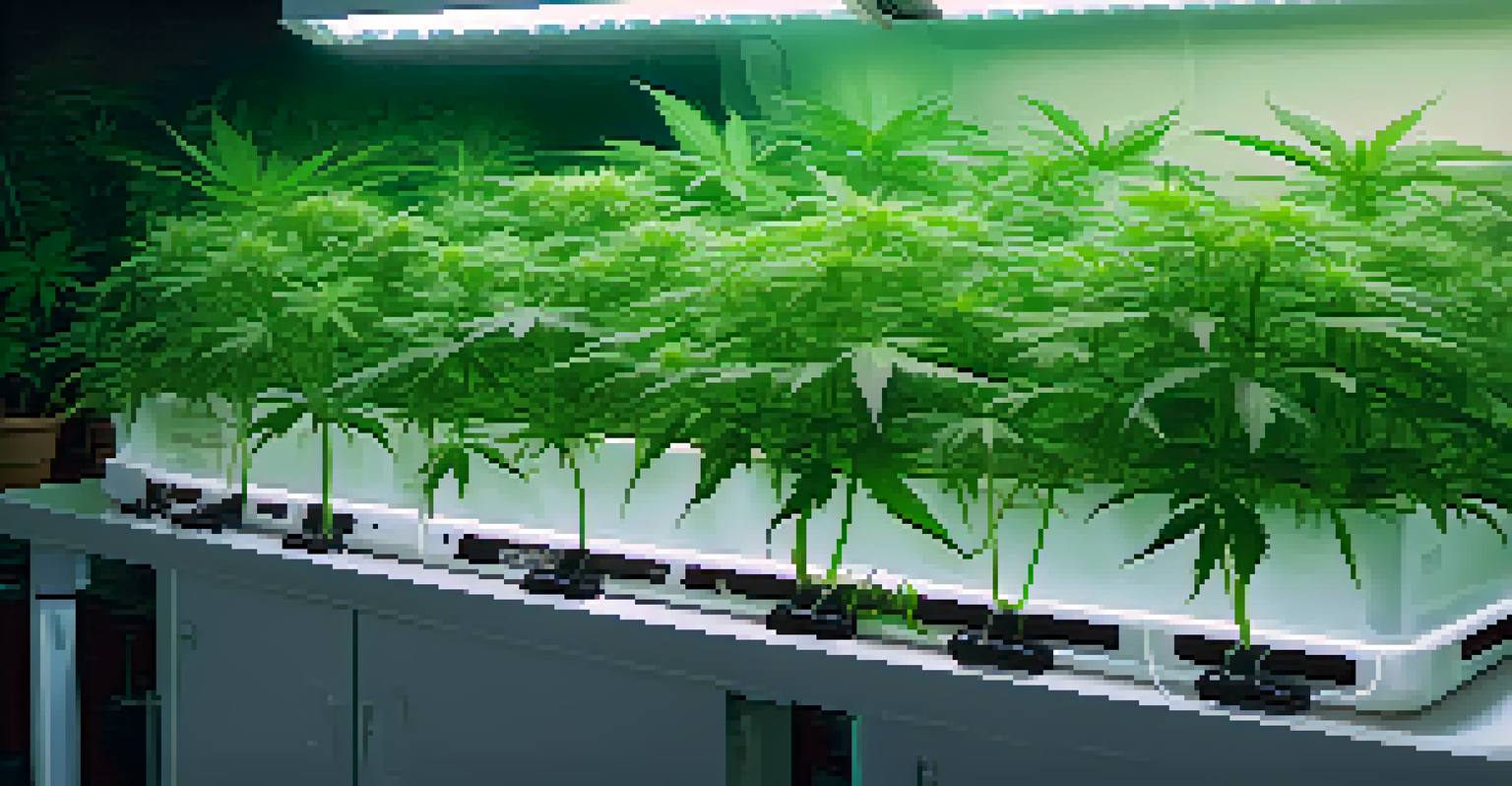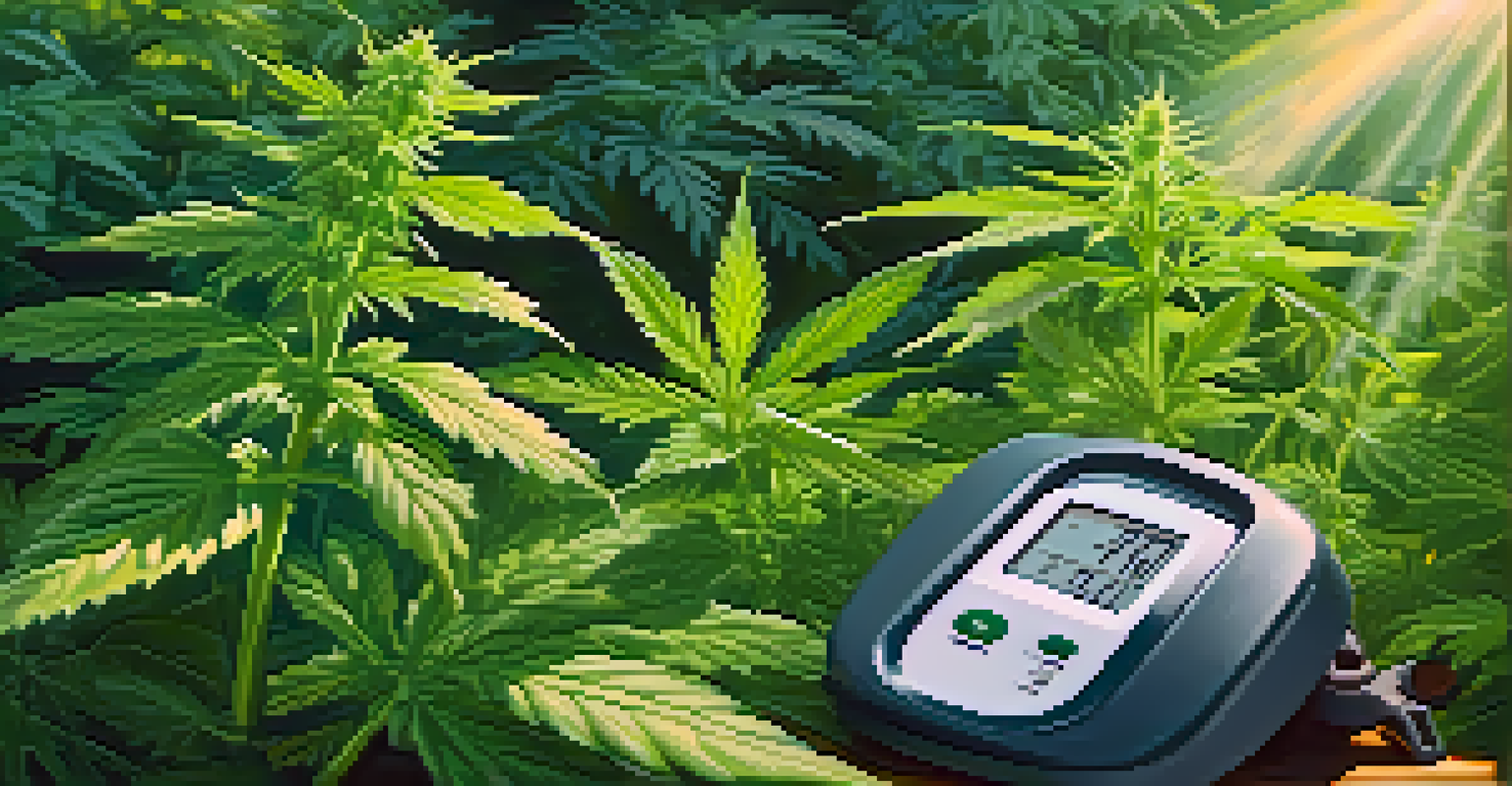The Role of pH Levels in Cannabis Soil and Hydroponics

What is pH and Why is it Important for Cannabis?
pH, or potential hydrogen, is a measure of how acidic or alkaline a substance is. In the context of cannabis cultivation, pH levels can significantly impact nutrient availability and overall plant health. Understanding pH is crucial because it affects how well your plants can absorb the nutrients they need to thrive.
Healthy plants start with healthy soil, and pH is a key factor in that equation.
For cannabis, the ideal pH range varies depending on the growing medium: 6.0-7.0 for soil and 5.5-6.5 for hydroponics. When pH levels fall outside these ranges, plants can experience nutrient deficiencies or toxicities, leading to poor growth and lower yields. So, knowing what pH means and its implications is essential for any grower.
Think of pH like a Goldilocks zone for your plants—not too high, not too low, but just right. It’s all about creating an environment where your cannabis can flourish, which ultimately leads to healthier plants and better harvests.
How pH Levels Affect Nutrient Availability
Nutrients are vital for plant health, but their availability is closely tied to pH levels. Different nutrients are accessible at specific pH ranges; for example, iron becomes less available when the pH is above 7. This can lead to deficiencies, which manifest as yellowing leaves or stunted growth in cannabis plants.

In soil, a balanced pH helps ensure that essential nutrients like nitrogen, phosphorus, and potassium are readily available for uptake. Conversely, in hydroponics, where the medium is water-based, maintaining the right pH is even more critical, as plants rely entirely on nutrient solutions for sustenance.
pH is Vital for Cannabis Growth
Maintaining the right pH levels is essential for nutrient absorption and overall plant health in cannabis cultivation.
Imagine trying to sip water from a straw that’s too bent or blocked—that’s what it’s like for plants when pH levels are off. If the pH isn’t right, it can feel like a struggle for your cannabis to access the nutrients it desperately needs.
Testing pH Levels: Tools and Techniques
To ensure your cannabis plants are thriving, regular pH testing is essential. There are various tools available, from simple pH test strips to more advanced digital pH meters. Each method has its pros and cons, but all aim to provide an accurate reading of your growing medium's pH.
Understanding the needs of your plants is the first step towards successful cultivation.
For soil, you can test pH by mixing soil samples with distilled water and using pH strips or a meter. In hydroponics, testing the nutrient solution directly is key to maintaining optimal levels. It’s a straightforward process that can save you from potential headaches down the line.
Think of testing pH like checking the temperature before a swim. You wouldn’t jump into a pool that’s too cold or hot, right? Similarly, regularly checking pH levels ensures that your plants are in the perfect environment to grow healthy and strong.
Adjusting pH Levels: Techniques for Success
If your pH test reveals that levels are off, don’t worry; there are several ways to adjust them. For soil growers, adding lime can raise pH, while sulfur can lower it. Hydroponic growers can use pH up or pH down solutions to make quick adjustments to their nutrient mix.
It's important to make gradual adjustments rather than drastic changes, as swift shifts can shock plants. Regularly monitoring and adjusting pH levels is like tuning a musical instrument; it helps keep everything in harmony for optimal growth.
Testing pH Ensures Plant Well-being
Regularly testing pH levels helps growers provide the optimal environment for their cannabis plants to thrive.
Consider the process of adjusting pH levels as nurturing a relationship. Just as you would communicate and adapt with a friend, your plants need gentle care and attention to thrive in their environment.
The Impact of pH on Cannabis Terpene Profiles
pH levels can also influence the terpene profiles of cannabis, which are responsible for the plant's aroma and flavor. Studies suggest that certain pH levels can enhance or diminish specific terpenes, ultimately affecting the overall experience of the cannabis strain.
For instance, maintaining a slightly acidic environment may boost the production of terpenes like myrcene, contributing to that classic earthy aroma. Conversely, a higher pH can lead to a more muted terpene profile, which might not be desirable for some growers.
Think of terpenes as the spice in your favorite dish; the right balance can elevate the flavor and aroma to new heights. By keeping pH levels in check, you can ensure that your cannabis delivers a delightful sensory experience.
Common pH Problems and How to Solve Them
Even with the best intentions, pH issues can arise, leading to stress for your cannabis plants. Common problems include nutrient lockout, where plants can’t absorb nutrients due to improper pH levels, or signs of deficiency, like yellowing leaves.
Recognizing these issues early can save your plants from long-term damage. If you notice any of these symptoms, a quick pH test can help identify the problem and guide corrective measures. Remember, a little troubleshooting can go a long way.
Adjusting pH Prevents Common Issues
Making gradual adjustments to pH levels can prevent nutrient lockout and other stress-related problems in cannabis plants.
Ultimately, think of pH problems as bumps in the road. With some attention and care, you can navigate these challenges and keep your cannabis journey on track.
Best Practices for pH Management in Cannabis Cultivation
To keep pH levels within the ideal range, consider establishing a routine. Regular testing, combined with timely adjustments and monitoring, can lead to a successful cultivation experience. Make it a habit to check pH at different growth stages for optimal results.
Additionally, using quality soil or hydroponic solutions can help maintain stable pH. Organic amendments can also contribute positively, as they often buffer against pH fluctuations. It’s all about creating a stable environment for your plants.

Think of these best practices as a recipe for success. Just like a great dish requires the right ingredients and techniques, managing pH levels effectively leads to a fruitful cannabis harvest.